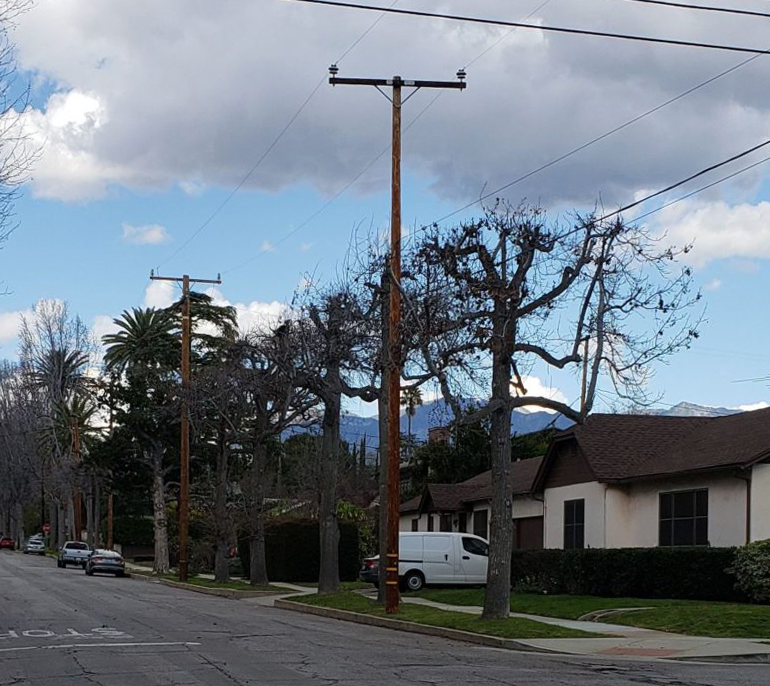from The Arroyo Lookout
by William Kelly
William Kelly is co-publisher of California Current, a weekly news service on the energy utility industry in California and the West. He writes on environmental and energy issues for the Los Angeles Times, San Francisco Chronicle, Inside Climate News, LA Weekly, Scientific American, and Alternet.
READ the full text of article HERE

The trees in this South Pasadena neighborhood were topped by Southern California Edison.
Oaks and other trees in California and along the Arroyo Seco beware!
It’s open season on trees for California’s three major investor-owned utilities. They plan to cut down about 400,000 trees along power lines this year and severely trim others ostensibly to prevent blazes in areas with elevated wildfire risk, which encompass more than 30 percent of the state’s land mass.
And this year’s just the warm up. Utility topping and chopping is planned to continue for the next eight years.
While there’s little question that power lines have sparked large and destructive wildfires, the plans do not rank how effectively the individual measures will actually reduce risk.
The three utilities plan to remove and top trees as part of so-called “enhanced vegetation management” programs outlined to the California Public Utilities Commission as part of wildfire safety plans. The safety plans were filed with the commission early this month in response to last year’s hasty enactment of SB 901 in response to the growing climate change driven danger of wildfires.
The plans, which are required under the law, are targeted for approval by May, according to CPUC President Mike Picker.
They outline a host of steps the utilities plan to undertake at a cost of about $3 billion a year to prevent their power lines from sparking fires. The money is to be collected from utility ratepayers.
A major part of the utility plans will be an intensive eight-year effort to clear any trees that may potentially fall on power lines or top them so they remain below lines. The plans, which contain dozens of separate safety measures, also call for shutting power down when winds blow, insulating lines, strengthening power poles, and putting lines in fire prone areas underground.
Some consumer advocates, like The Utility Reform Network Attorney Marcel Hawiger, fear some of the measures are redundant and could simply drive up what utilities charge ratepayers without commensurate fire risk reduction. The monopoly utilities have motive, they fear, since they’re guaranteed a rate of return, or profit, of about 10 percent on capital expenditures.
